Many people dream of having a dog that turns heads. A dog that will walk with you in the park with no leash. A friend that will ride in the truck without causing you to crash. Maybe you’re like me and you’ve dreamed of having a dog that would sit motionless in a duck blind. A dog that would never break until sent into the icy water with that one command word. Dog training that yields this behavior must be started with basic obedience.
My First Experience with a Highly Trained Dog
Before I got my dog, there was always one dog that would come to my mind when others would talk about well trained dogs. His name was Rocky. Rocky belonged to my neighbor’s son, and he would come to the neighborhood on a regular basis. He was a Chesapeake Bay Retriever, and boy was he smart. His owner could make him stay in one spot in the yard, and no matter what I did, Rocky would stay put until his owner released him. There were many times that Rocky would join us on the boat during the summer for crappie fishing. He never got a hook stuck in him or tipped over a soda can. He was truly amazing.
I had to have a dog like this
I always knew that I wanted a dog that could do what I had seen Rocky do. It would be so cool to have a dog that others would be amazed by. A dog that could join me on whatever adventure I decide to take, whether it’s a steep mountain trail or an icy lake during duck season, or just the town park.
I knew I wanted a Labrador. This is the ultimate breed for my way of life. He could retrieve ducks, join me on a trail, ride in the truck while scouting, and so much more. I thought I could even train him to find deer antlers and flush pheasants. I had to have the all-American Labrador. But I never knew my biggest hurdle would be convincing my wife.
It took some work and several months of the kids and I making “subtle”, or maybe not-so-subtle hints. She finally gave in, and the search was on. I looked at countless ads and scoured the internet to find the perfect pup. I was convinced that I needed a yellow lab. I never knew of anyone around me having a yellow and I wanted to be different. Not to mention “Old Yeller” was one of my favorite movies growing up.
Simon
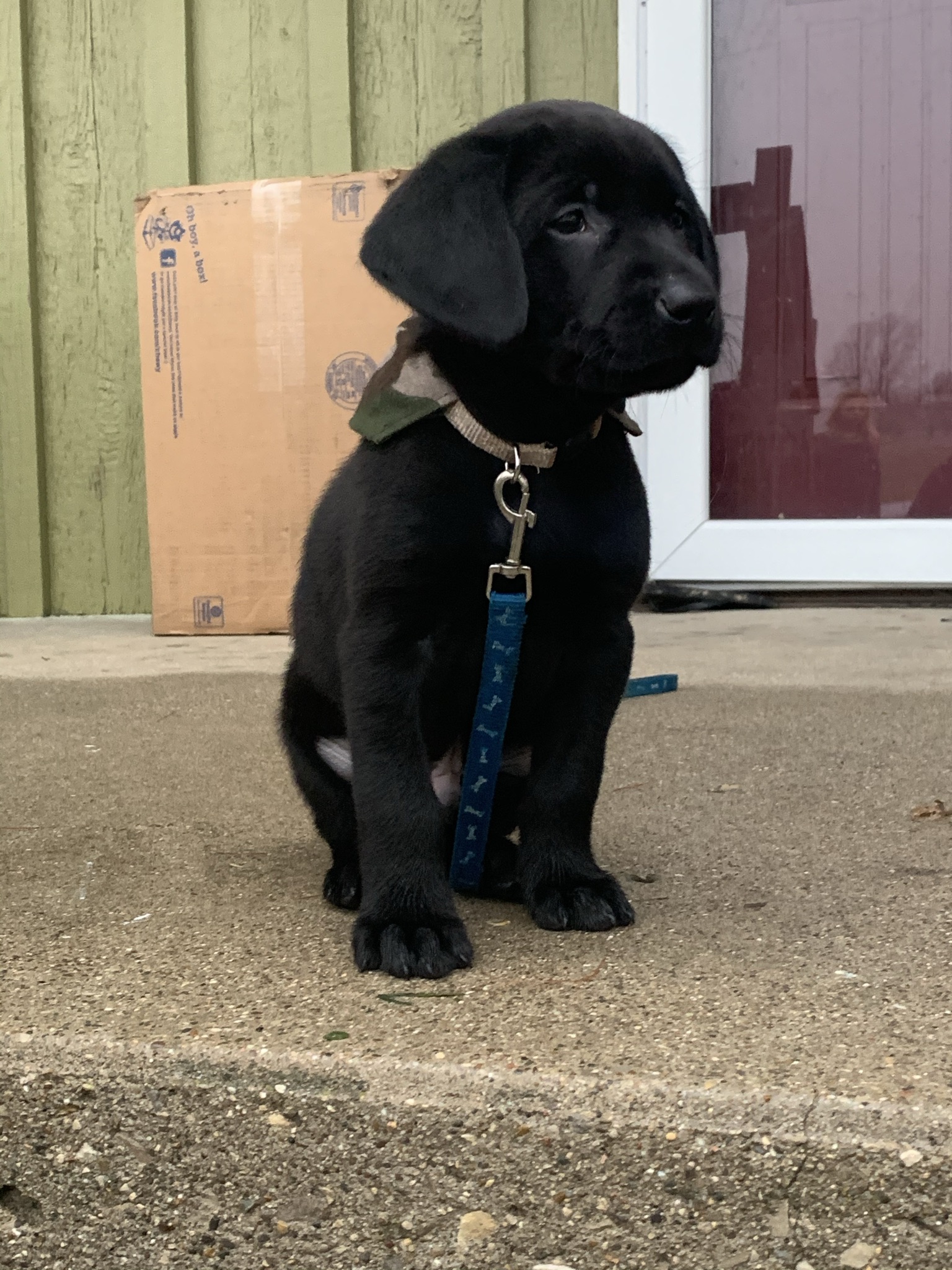
I finally found the perfect opportunity to get my lab. My sister found a family in her Facebook community that was selling a litter of Black Lab puppies. Even though they weren’t yellow, I knew this was meant to be. The family was about an hour south of me and I got the feeling they were a good family. This litter was full-blooded American Labrador with health checks and registration papers. The pups would be ready to take home in just a few weeks.
My wife and I decided to meet the family and the pups without the kids and pick one out. The family was extremely nice and took great care of the pups. I was able to sit on the floor and let all 12 of them climb all over me to see how they acted.
How to Pick a Puppy
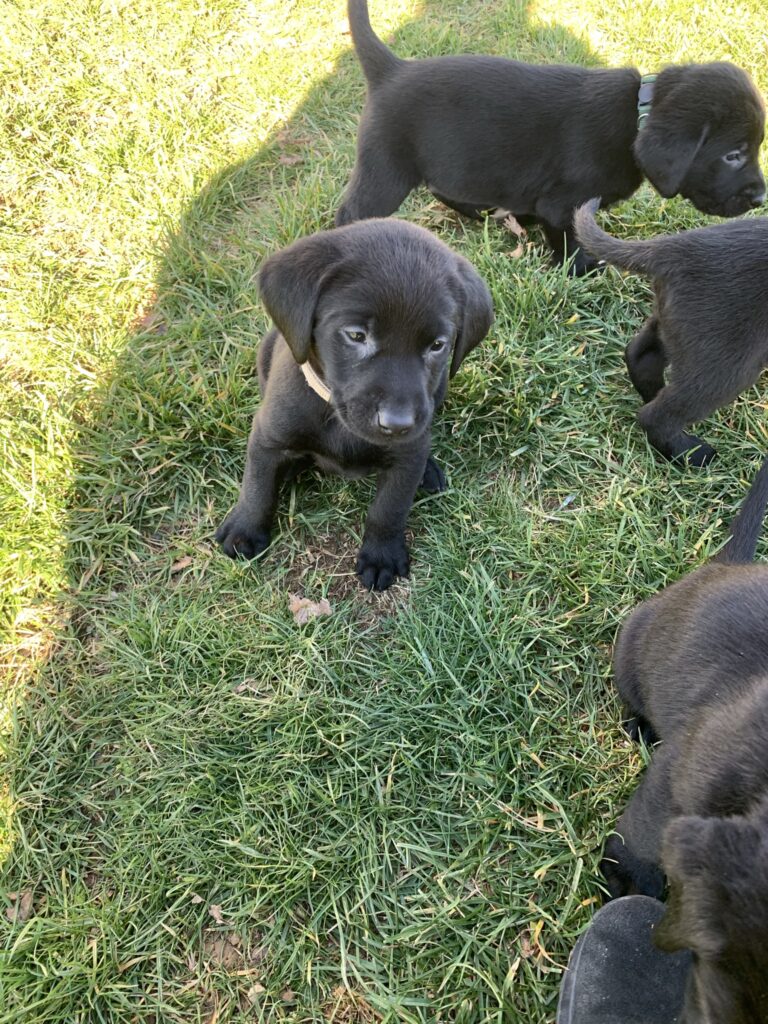
When I went to meet the puppies, I was convinced that I knew exactly how to pick one. This theory is not scientific or studied in any way for that matter. However, I was convinced that I wanted a puppy that would show interest in me, but wasn’t the first one on my lap biting at my shirt. My thought was that the first one to climb on me and begin to play would be too much to handle, while the one that never paid attention to me may never have any loyalty or drive.
Simon did just what I wanted to see. While two or three pups climbed all over me and wasted no time befriending me, Simon came in a bit more calculated. I looked over and he made eye contact with me. He looked like he was really checking things out and making a calculated decision to come and see me. Sure enough, he made his way to me and climbed up. I looked at my wife and said, “This is him”.
When to bring your dog Home
The short answer is day 49. Yes, when the puppy is 49 days old bring it home. I learned this tip from a book called “Water Dog” by Richard A. Wolters. This was a book that I had read long before getting my lab, and I highly recommend it, even if your dog will not be retrieving ducks.
In the book, Richard claims that day 49 is the ideal time to bring your dog home. He claims that 49 days is the minimum time that the puppy needs to be with his mom for health purposes. At this point he can be safely weaned without effecting his health. After day 49, the pup will become harder and harder for you to train as he begins to build a pack mentality and a strong bond with his mother and siblings. Get the pup on day 49. No sooner, and no later.
When to start training your dog
The short answer to this is day one. Obedience training can start right away. We need to build trust with the dog and establish our dominance as the leader. I don’t say this to be mean, but the dog needs to understand that you are the leader. He needs to understand there are ground rules. It’s no different than how you should treat your kids. You can’t just do whatever you want whenever you want. This is the mentality that you should have at all stages of your dog’s life. If you establish this from the beginning, you will be set.
What is obedience training?
Obedience training allows you to have a dog in your home that can be tolerated. He knows how to listen and behave himself. Obedience training may look different depending on what your lifestyle is like. A dog living in a city apartment will be much different than a hunting dog, or a dog raised on a farm around livestock. There are so many things that you will have to teach your dog to do and not do. Use common since when it comes to choosing what you will focus your teaching on.
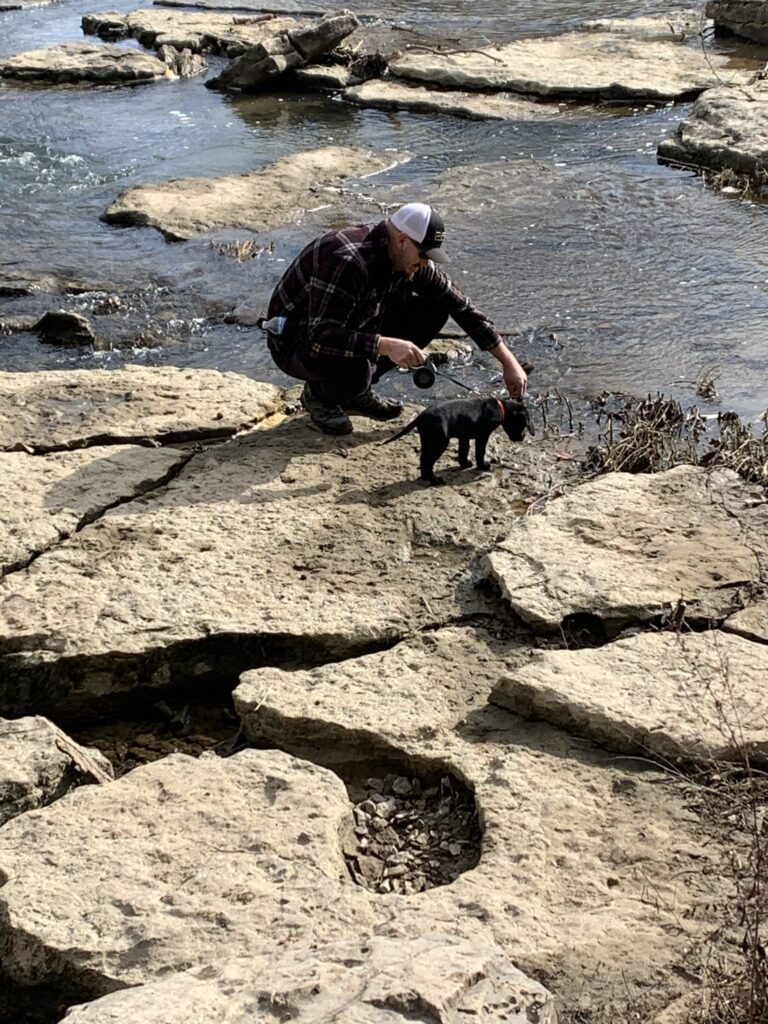
Basic Commands
Much of the obedience training process has to do with teaching your dog certain commands. These commands should be given with ONE WORD. Dogs cannot learn English, but they can associate single words with actions. Here are a few basic ones that I taught Simon very quickly. Your list may look a little different, but this seems pretty universal to me.
- Sit
- Stay
- Come
- Heel
- No
Here are a few that he learned later as I introduced more training.
- Up
- Kennel
- Drop it (I know I said one word, but this made sense)
Obedience Training without commands
There are two parts of obedience training that I can think of that do not involve a command. Potty training and learning their name. Both are essential and must begin on day one. If you couple these two things with the list of commands above, you will have an obedient dog in no time.
Potty training
This is so easy if you have a relatively smart dog. Potty training a dog always seemed so complicated to me before. I could never imagine how someone could teach a dog to not use the bathroom in a house. I’m going to be honest; the dog does this on his own for the most part. The biggest thing we must remember is to give them plenty of chances to use the bathroom outside. If you don’t take them out enough, they will go in the house. If this happens enough, they will eventually think this is normal. Do not let this happen.
For a few weeks to a few months, you are going to have to sacrifice a lot of your time to ensure that they don’t go in the house. A 7-week-old puppy has a very small bladder. You will need to take them outside every 30 minutes for the first couple of weeks or so. After that, you will begin to figure out how often he goes, and you can adjust accordingly. Yes, this includes nighttime. It’s like having a baby.
Use a Kennel or Crate
Potty training goes much better if you keep your dog in a small place during the night light a box, or crate, or small pen. They will not want to pee in this space, and they will think of it as their bedroom. It won’t be long before they will wine when they need to go to the bathroom, because they will not want to do it in their bedroom. When you hear the wine, get up. If you haven’t heard a wine, go outside every 30 minutes.
After the first week or so, you will likely have to go out every hour instead of 30 minutes. As time goes by, these breaks will get less and less frequent and you will know exactly when you need to go out.
After your dog eats or drinks, they will likely have to use the bathroom shortly afterward. I would say 5 to 10 minutes after finishing eating or drinking it’s time to go out.
The Relapse
If you stay diligent with this, you can have your puppy house trained in just a few weeks. But I will tell you from experience, they will have accidents, even when you’re doing everything right. Just be patient and stick with the process. It will happen. Your dog will go through a phase of using the bathroom in the house, even after he is trained. I don’t know why this is, but it’s like they go through a phase where they test you.
During this testing phase, I would start to punish the dog for going in the house. I don’t mean to beat the dog, but a stern voice will work wonders at this age. This will likely happen around the 3–6-month age. While they are small puppies, I would not waste your time trying to punish your dog for having accidents in the house.
Trust the process and stay diligent.
Use Treats
From here on out I will be referring to treats. Some would disagree with my approach, but it worked great for me. If done correctly, this can be quite effective.
The best way to use treats for training is to reward them with the very food they will be eating that day. Do not feed your dog in the morning. Instead, take half of the food that he would normally eat and place it into a container or bag that you can draw from throughout the day. Reward your pup with one piece of food every time he does something good.
This will add up over time and you will end up hand-feeding your puppy half of his food throughout the day while doing fun drills that are actually teaching him. Towards the end of the day, take 5-10 mins to have one last session where you ask the dog to do something extra special. When he does what’s expected, give him the other half of his food. This will act as a final reward at the end of the day.
This hand-feeding reward method is extremely effective, and you will see why as we move forward.
Teaching your dog his name
Your dog needs to understand what his name is. This will be the way you get his attention to give a command. If your dog is preoccupied and you say his name, he should make eye contact with you. When this happens, you know you’ve mastered this step.
The best way to do this is to say his name, and if he looks at you, give him a treat. If he doesn’t look at you, say it again, but don’t reward him until he gives you eye contact. This is quite simple and will take no time at all.
Training your dog to sit
I think it took me three days to train Simon to sit. I couldn’t beleive how quickly he learned this. Teaching your dog to sit is more than just a fancy way to show off when you have visitors. It comes in quite handy when duck hunting. Teaching your dog to sit can also be a safety measure. Sitting is the way we get the dog to ultimately stay, which can be a helpful command when a car is coming, or some other danger presents itself. Sitting is a good way to maintain control over your dog.
To teach him to sit we simply say the command clearly and do one of two things. Push his butt down and make him sit, then reward him with food. Or, my preferred method, is to hold the treat out with your hand, (Trust me he will quickly know what this means) but move your hand back as you deliver it to him in a way that forces him to sit. You can put the dog in a seated position as you give him the treat.
The important part of the second method is to say the word sit, as you’re moving towards him with the treat. This makes his butt hit the floor a couple of seconds after the command. I like to wait to fully release the treat until his butt is on the floor. Sometimes Simon would try to cheat and do a half-sit. If this happens, NO REWARD. Say it again and reward him with food when he does.
Training your dog to stay
I will be honest; this one is challenging. Teaching your dog to stay is much more complicated than the sit command. The reason for this is there is simple. There is an unknown length of time the dog is expected to perform this command. This time will vary depending on “why” you want him to stay. This is much more intricate, and your dog will have to work to fully understand what you’re trying to accomplish.
The sit command must be coupled with another, which I call the release command. Please do me a favor and always use a release command any time you ask your dog to sit. It is so much more effective to teach your dog to stay until he hears the release word. Please don’t ask your dog to stay somewhere indefinitely while you do chores. There is no way the dog can do this without breaking, so you’re setting him up for failure.
Choosing a release command
The release command I chose to use for Simon is “OK”. This is likely a very poor choice of words and here’s why. Imagine I’m sitting in a duck blind with Simon and three of my buddies. I command Simon to stay, as I don’t want him exploring the swamp while we wait for birds. He could be tempted to break any time he hears the word. He hasn’t done it yet, but I haven’t had him in many of these situations yet.
I would recommend selecting a release word that doesn’t come up in everyday conversation. I imagine this is what police must consider when training a dog to attack other humans. You certainly wouldn’t want that happening regularly.
Where to begin
The best way to teach the stay command is very slowly. Simon is now 3 years old, and we are still working on this. I believe the stay command is something that takes constant work. It just seems to take constant polishing and refining. If we haven’t trained for a while, he’s usually not very good at it. However, it doesn’t take long before I have him staying rock solid.
With that being said, start by having your dog sit, followed quickly by the stay command. Give him 2 seconds and then give your release command and reward and praise. Don’t expect much because at first, this will happen by accident. After a while, your dog will begin to figure out that you are expecting him to not move until he hears the release word.
Start with just a couple of seconds and perform lots of reps. After a while, you can add time to this and begin to walk away or even leave the room. But don’t take this too fast. If your puppy gets up before being released, say AH AH! And make him sit right back where you had him. Only let him go when you have given the release command. Otherwise, we keep saying AH AH and putting him back.
He will learn eventually.
Training your dog to come
Here is another easy one. But I must tell you, this is so important. You must have a dog that will come when commanded. If they are approaching danger, we want the dog to listen and come to you every time. For hunting situations, this is important if they want to chase deer or swim towards a rapid current when retrieving ducks.
For this drill, I chose to use the word “come”. It is simple to teach and seemed to happen quickly with Simon. Simply start by holding your hand out with a treat and saying come. He will be rewarded when he gets to you. Your puppy will quickly get used to seeing your hand and exactly what it looks like when you’re holding a delicious treat.
This drill is very easy to perform in the house. However, when you happen to be in an unfamiliar location, he can be easily distracted. If you are outside, or at the park when teaching this drill, I would recommend using a long rope. Hold your hand out with the treat like normal. If he is too distracted, tug at him and bring him to you.
Training your dog to heel
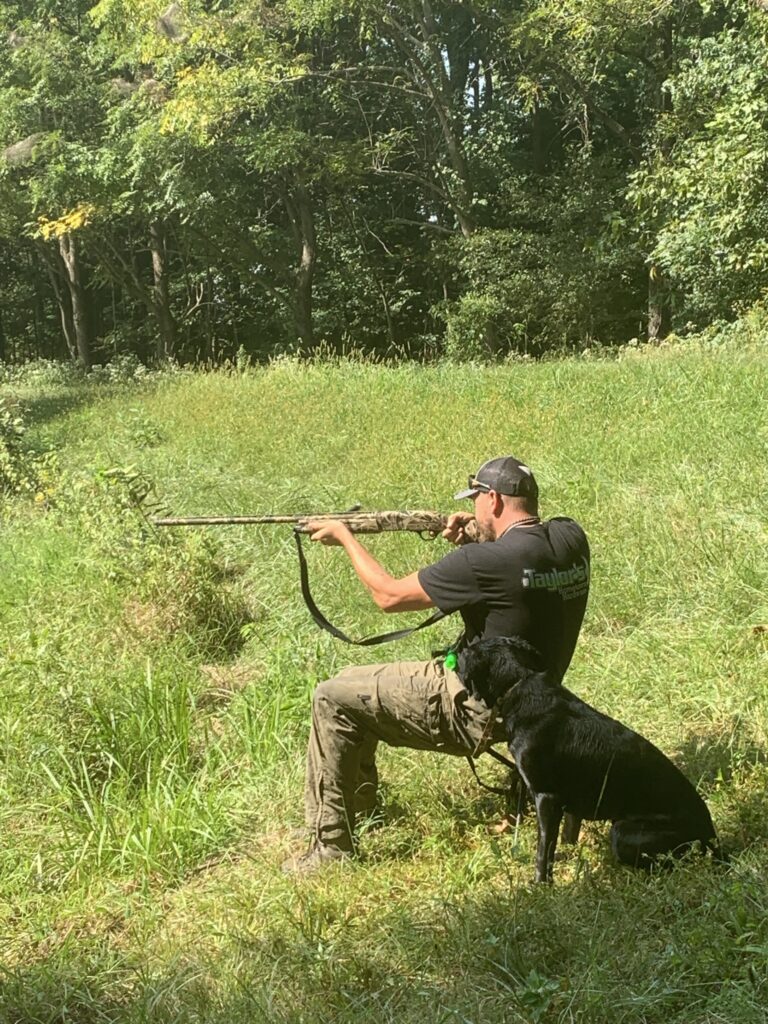
Placing your dog at heel is very beneficial for hunting situations. When shooting wild game, it is very nice to have your dog sitting at your side until given the release command. This is another safety measure. We don’t want our dog running around in front of us while we’re shooting. This can be quite handy for other situations outside of hunting as well.
When we put a dog at heel, it is common to place him on our left side. I’m sure there are other reasons for this, but the main reason I can think of is most shotguns eject spent shells out the right side. This keeps your dog from getting hit by shells and distracted. We want his eyes focused forward.
To teach heel, simply lead your dog in a circle on your left side using the treat. It works well to offer it to him and let him try to get it, but don’t release it until he is at your left side, facing forward and butt on the floor. This can be done in one quick and fluid motion. While he is in the process of getting into this position, simply say “Heel”. I like to say it while he’s turning around and just before he sits. Simon got it quick. To this day he still sits at my left side when I say heel, but he tends to sit a little too far away and forward. I often have to correct him and say, “AH AH, HEEL!”. It will take constant work to keep your puppy from cheating.
Training your dog to kennel
I always liked to have Simon in a kennel at night and when we left the house. This saved a lot of bathroom accidents. I don’t need to spend much time on this one. Purchase a kennel that’s comfortably sized for your dog. But make sure it’s not so big that he may use the bathroom in the far corner.
Let him play inside of it during the day. Throw a treat or his favorite toy into it and say “Kennel” or whatever command you like, just before he goes in.
Training your dog to jump up onto something
This is another handy command to teach your dog. It is a blast to load him up in the truck or car and take him on an adventure. I taught him to jump up on things the whole time he was growing. Obviously, we started small with little stools and things. It wasn’t long before he was able to leap into the bead of the truck.
Pat your hand where you want him to go and say “UP”. For some reason, I have always said: “UP UP”.
Incorporate hand signals
At times it can be difficult for your dog to hear you. If he is far in a field, or swimming in the water, this can be especially difficult. In addition, you may want to be quiet and tell your dog to sit or stay without making noise.
This can be done right away, or a bit later. It works best if the dog already knows how to do the commands so you can make the hand signal while he’s doing it. He will eventually recognize the pattern. Here is what Simon knows with hand signals so far.
- Sit-Point finger to the floor
- Stay- Hold hand out like giving a Five
- Heel- Point to my left side
- Look left or Right when he can’t find his toy or bird- Simply get his attention and point. He will catch on that he needs to look where you’re pointing.
I will also add that he needs to be at a point where he looks at you when you say his name. You must have his attention before you can give him a hand signal.
Advanced training
Now that Simon knows his basic commands, there are a few advanced things that we are working on, and a few more that I hope to get to soon. None of these can be done without first learning the basics. I will write about these advanced lessons in a later article. For now, here are a few examples to get your gears turning.
- Retrieve two toys. But retrieve the one I command first.
- Return to heel with the toy and sit and hold until I grab the toy.
- Fine tune hand signals for retrieving lost items
- Blind retrieves
- Shed Hunting
- Flushing Birds
- Retrieve a drink from the fridge. Just kidding
Avoiding bad habits
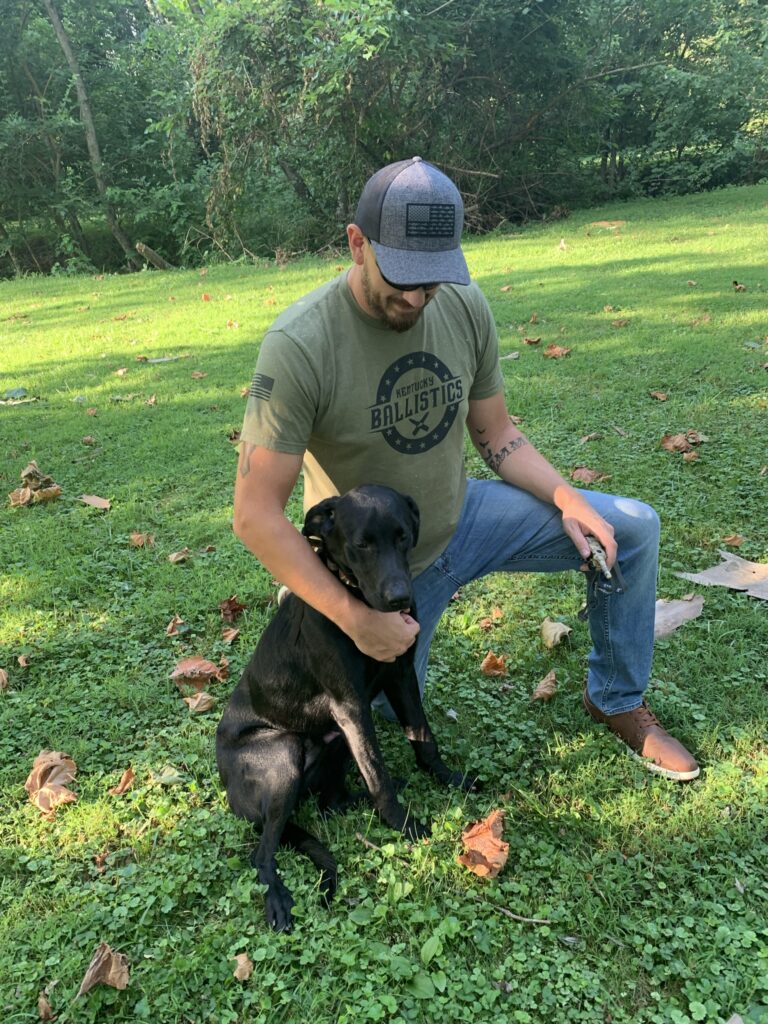
It is vital to avoid bad habits from the very beginning. It is hard to break a dog of something after he does it for a while. I never wanted Simon to pull on a duck when I tried to grab it from him. Therefore, my family knew not to play tug of war with him. He has never, ever played tug of war.
I also didn’t want him jumping on people when he got big. So, I never allowed him to jump on us. He was always told NO when trying to jump. Now that he’s 75 pounds, he doesn’t jump on anyone.
Identify the behaviors that you wouldn’t like to see later and stick to your guns from the very beginning.
Consider the Pedigree
I do not beleive that all dogs are capable of elite levels of training. Sure, most dogs can be taught the basics. However, I believe that only certain breeds are capable of this level of training. Do your research and choose a breed that will work well for your lifestyle. We all know the wildly popular breeds that are easy to train. These breeds are going to cost some money.
Additional Resources
Between the time I knew we were getting Simon and the day we picked him up, I imagine I watched a hundred hours of YouTube videos on dog training. I knew I wanted to start on the right foot. So, I took this time to soak up as much knowledge as I could.
There were several channels that I watched, but there were certainly two that I owe most of my success to.
#1 Stonnie Dennis: You can find Stonnie on YouTube. He seems to train a countless number of dogs and has a very down-to-earth approach to training. Stonnie is extremely focused on exposing the puppy to real-world situations. He calls it adventure training, and that got my attention immediately. Check him out. Stonnie Dennis Dog Training & Boarding (kentuckycanine.com)
#2 Standing Stone Kennels: Ethan and Kat from Standing Stone Kennels also have a great YouTube channel. They are a bit more technical and focus more on hunting training However, I would still encourage all of you to watch them for the basics. Give them a visit here. Standing Stone Kennels
I look forward to writing much more on the topic of dog training. If you haven’t seen my articles on hunting, fishing, backpacking, and more, check them out here.
Good Luck
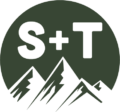
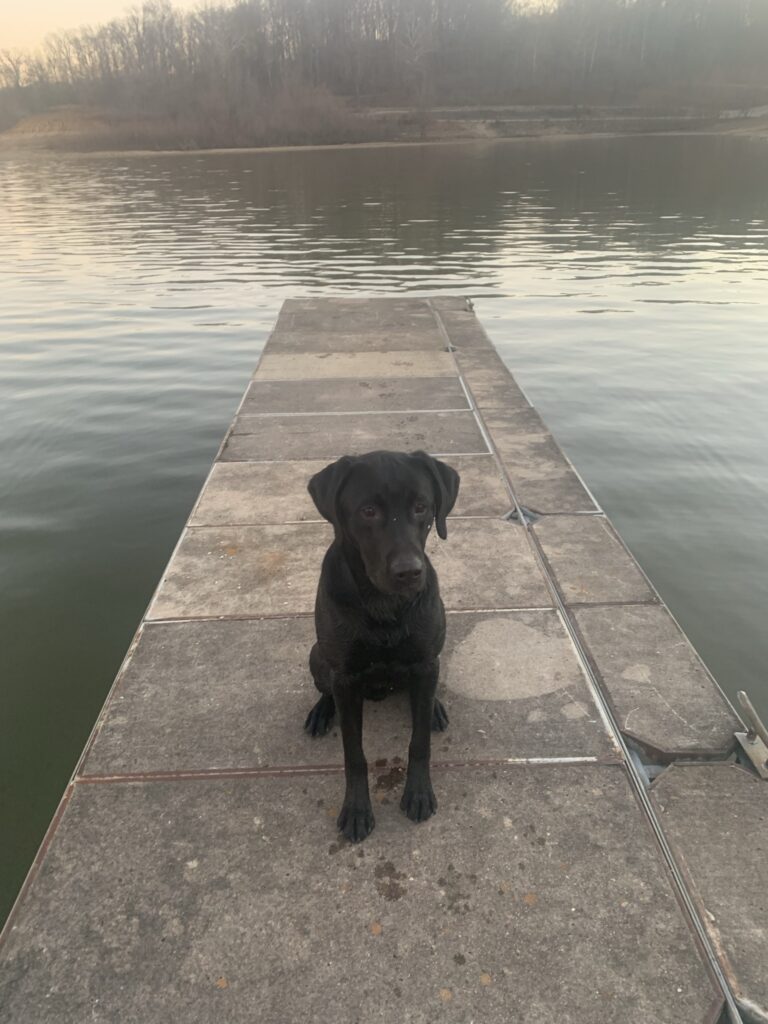
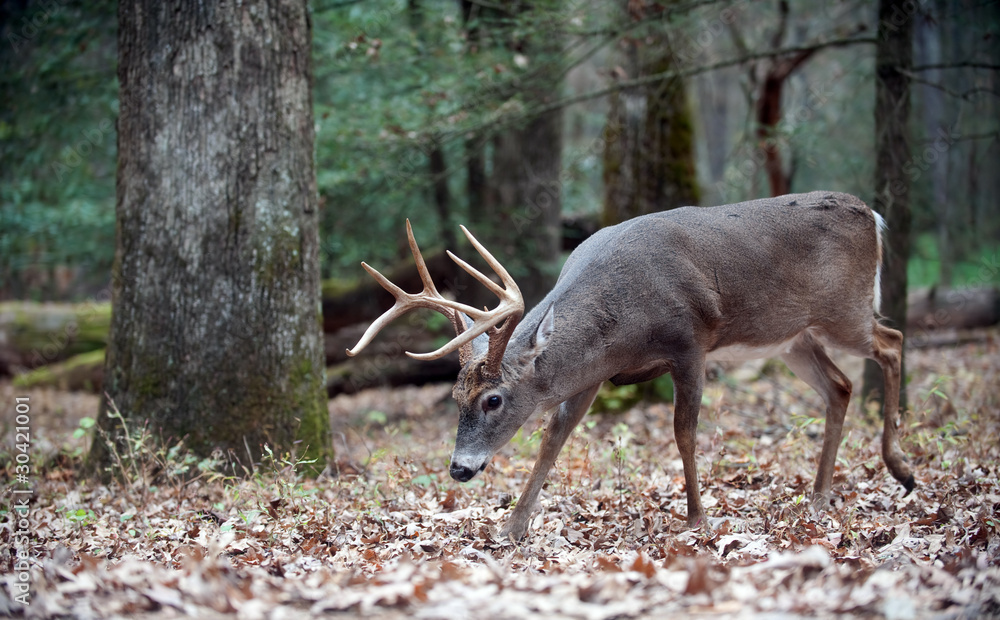
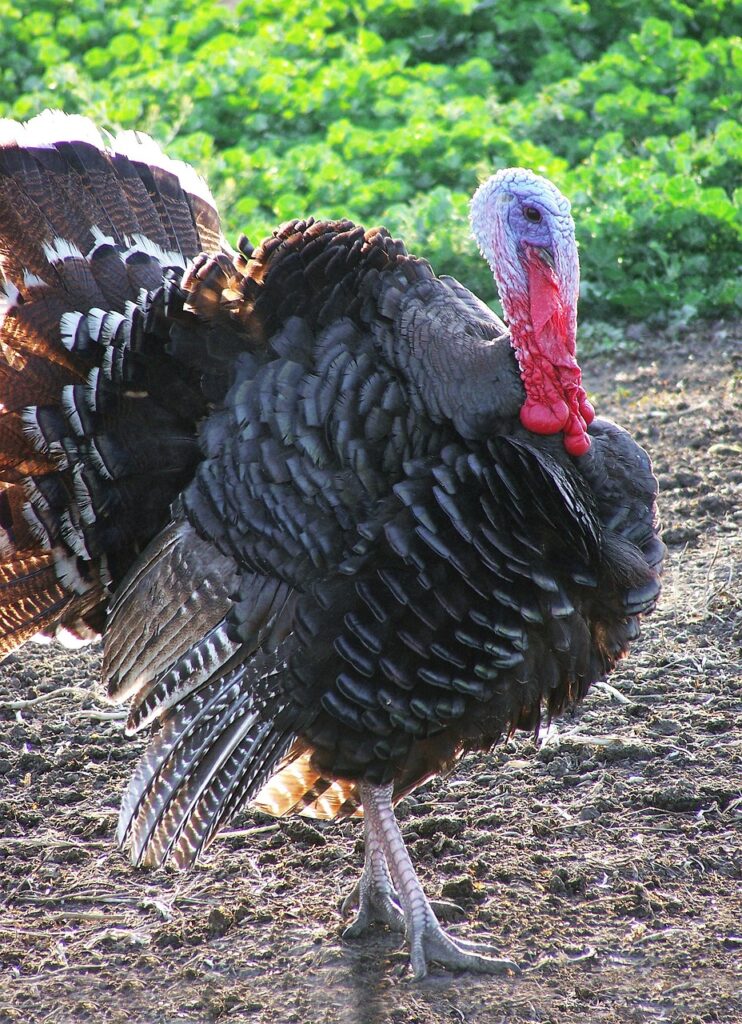
A lovely story. And a great way to bond with your dog. The only thing I would do differently is start with hand signals instead of words. Dogs are more inclined to pick up on body language than verbal cues. Thanks for sharing.
Interesting. Thank you for the input.